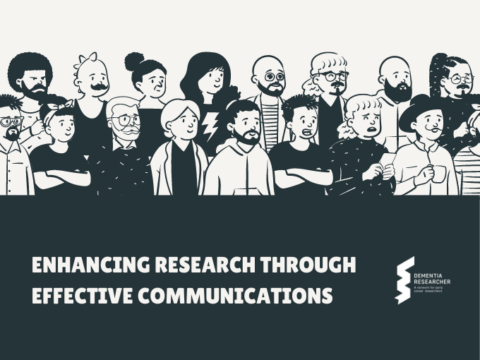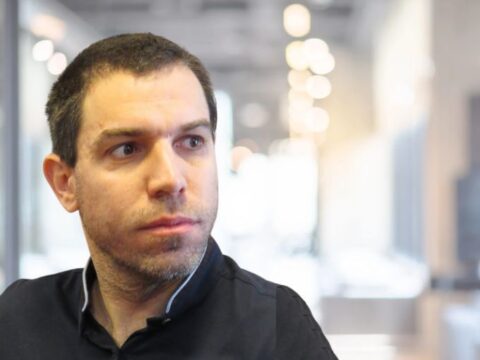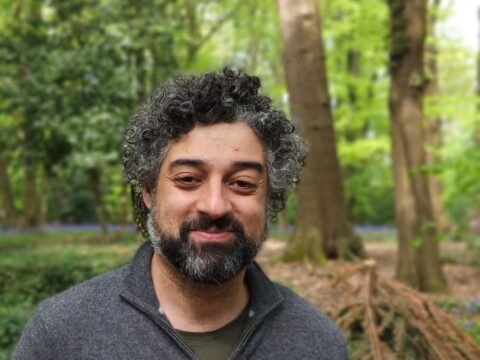New film developed by Professor Alison Wray from the School of English, Communication and Philosophy at Cardiff University.
The central focus her my research is developing innovative models that can account for patterns observed in language. Professor Wray’s primary contribution is understanding the causes of disrupted communication when someone is living with a a dementia – not just how the underlying brain damage affects the production and comprehension of language, but also what happens to the norms of social interaction when they interface with the cognitive disruptions caused by dementia. This work on dementia developed from and builds on her previous work over many years, in characterising formulaic language (prefabricated wordstrings).
Formulaic language encompasses strings of words that:
- appear to be stored whole in memory for convenience (e.g. thank you very much; what I mean is)
- are particularly frequent in text (e.g. in the middle of?)
- have a social importance for particular people (e.g. present arms)
- are memorised or repeated,
- and/or are non-compositional in form or meaning (e.g. by and large; woe betide).
Drawing on observations of formulaic language in a variety of contexts, Professor Wray has developed models of how language is learned, processed and stored, and have applied them, through experiments and other investigations, to issues in first and second language acquisition, language disability and the evolution of language. She has written about the role of formulaic language in translation, the capacity for formulaic language materially to improve the quality of a non-native speaker’s interaction, and the nature of formulaic language in language disorders including Alzheimer’s Disease.
Current research
The Communicative Impact model: In 2014, Professor Wray began work on a new model of how the act of communication interfaces with language processing. It draws together socio-interactional and pragmatic theory with models of cognition, to demonstrate how forms of language are shaped by what we need to achieve through communication, and how language is used to make good shortfalls in communication when the speaker is under cognitive pressure. The model combines her previous work on formulaic language, Alzheimer’s Disease and second language acquisition, and it is designed to offer opportunities for experimental interventions in situations where communication is typically undermined by reduced cognitive capacity and/or lexical access problems, including Alzheimer’s and post-childhood foreign language learning. The model is described in most detail in her2020 book The Dynamics of Dementia Communication (Oxford University Press), https://global.oup.com/academic/product/the-dynamics-of-dementia-communication-9780190917807?cc=ru&lang=en&#.
Based on the model, she scripted three animated films about aspects of dementia communication (As seen above).Understanding the challenges of dementia communication (2017, 16min) presents key ideas from her research in layman’s terms. Dementia: the ‘communication disease’ (2018, 18min) offers practical ideas for approaching communication in new ways. The focus of Dementia communication across language boundaries (2020, 31min) is when carer and client aren’t fluent in the same language. Funded by the Norwegian Research Council, this film also has a Norwegian version. The English versions are all voiced by British actor Sir Tony Robinson.
With her collaboration, Six Degrees Social Enterprise in Salford, UK, has developed workshops to support professional and family carers of people with dementia that use her ideas to address the causes and help alleviate the stress of being a carer in this context.
Linguistic theory at the boundaries: The development of macro-theory that relates linguistic form and function to the cognitive and social aspects of language behaviour. Rooted in the models of formulaic language acquisition and use (see above) more recently they have broadened to examine the ‘word’ as an inherently vague phenomenon, language as a fundamentally hybrid system, and a new theory of how cognitive and social pressures on language production are managed into a steady state of fluency using options in form selection.
Language profiling: Supported by funding from Alzheimer’s BRACE and the British Academy/Leverhulme, Professor Wray is a PI on a project exploring early linguistic markers of risk for future Alzheimer’s disease. The study participants are part of a parent project called PREVENT, funded by the Alzheimer’s Society (PI Prof Craig Ritchie, University of Edinburgh).
For more information on Professor Wray visit: https://www.cardiff.ac.uk/people/view/99217-wray-alison
Watch all the YouTube Films here: https://www.youtube.com/channel/UC6kMlO8mkB09GNCLm1zbaHQ






